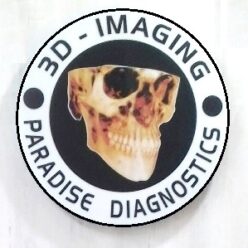Cone Beam Computed Tomography (CBCT) scans offer several benefits, particularly in the field of dentistry and maxillofacial imaging. Here are some of the key advantages:
High-Quality 3D Imaging:
CBCT provides detailed three-dimensional images of the teeth, jaw, and surrounding structures, offering a comprehensive view that is especially useful in dental and maxillofacial applications.
Accurate Treatment Planning:
Dentists and oral surgeons use CBCT scans for precise treatment planning, particularly in procedures like dental implant placement, where understanding the bone structure is crucial for success.
Improved Diagnostic Capabilities:
CBCT can reveal intricate details of dental and maxillofacial anatomy that may not be visible in conventional 2D dental X-rays. This can aid in the diagnosis of various conditions and pathologies.
Orthodontic Planning:
Orthodontists use CBCT to assess the position of teeth, the jaw, and the overall facial structure. This information is valuable for planning orthodontic treatments, such as braces or aligners.
TMJ Evaluation:
CBCT is effective in evaluating the temporomandibular joint (TMJ) for abnormalities or disorders. It provides a detailed view of the joint and surrounding structures, aiding in diagnosis and treatment planning.
Endodontic Diagnosis:
In endodontics (root canal treatment), CBCT can assist in diagnosing and treating complex cases by providing detailed images of the tooth and its root canal system.
Quick and Non-Invasive:
CBCT scans are relatively quick to perform and are non-invasive compared to some other imaging techniques. This makes them more comfortable for patients.
Reduced Radiation Exposure:
While CBCT does involve exposure to X-rays, the radiation dose is generally lower than that of traditional medical CT scans. The technology is designed to focus on specific regions of interest, minimizing unnecessary radiation exposure.
Surgical Planning for Maxillofacial Procedures:
Oral and maxillofacial surgeons use CBCT to plan complex surgical procedures, such as jaw surgeries and facial reconstructions. The detailed images help surgeons visualize anatomical structures and plan the surgery more accurately.
Better Visualization of Dental Anatomy:
CBCT provides a clear and detailed view of dental anatomy, including teeth roots, bone density, and surrounding tissues. This is valuable for various dental procedures and interventions.
It’s important to note that the benefits of CBCT should be weighed against factors such as radiation exposure, and the use of CBCT should be justified based on the specific diagnostic or treatment needs of the patient.
